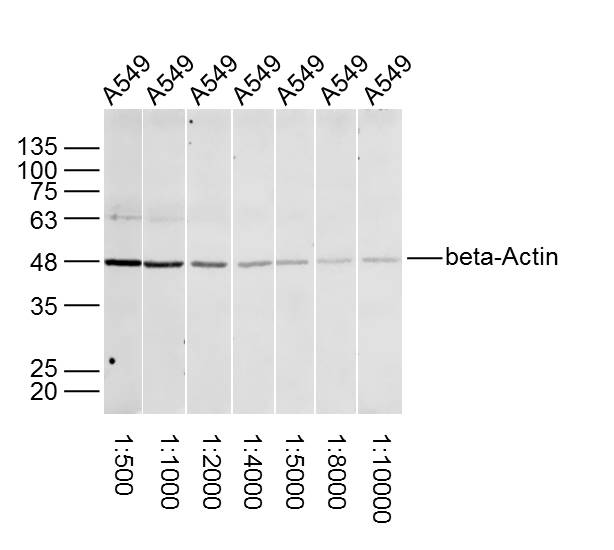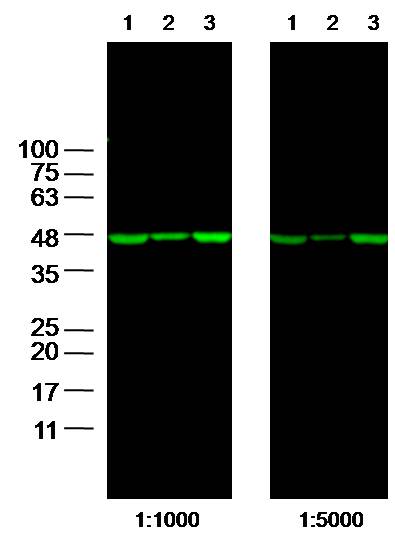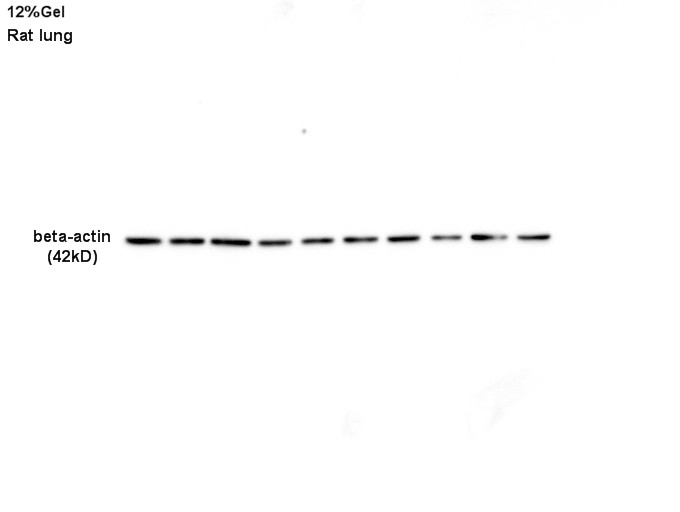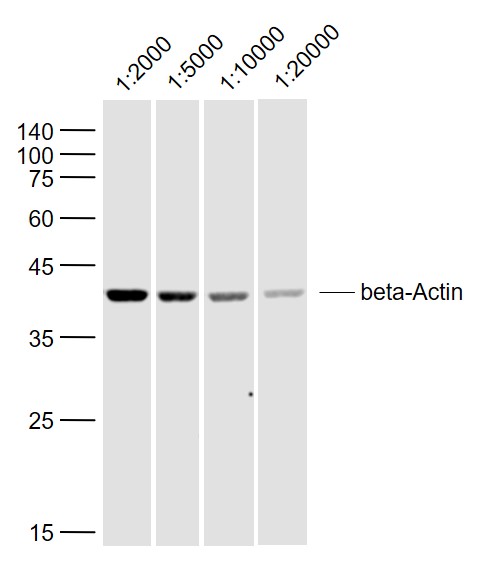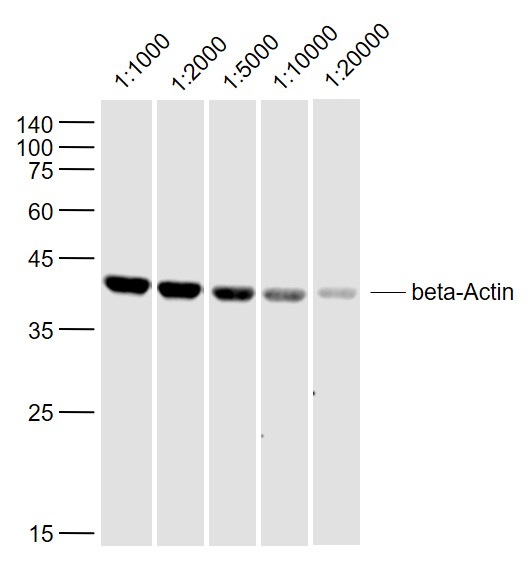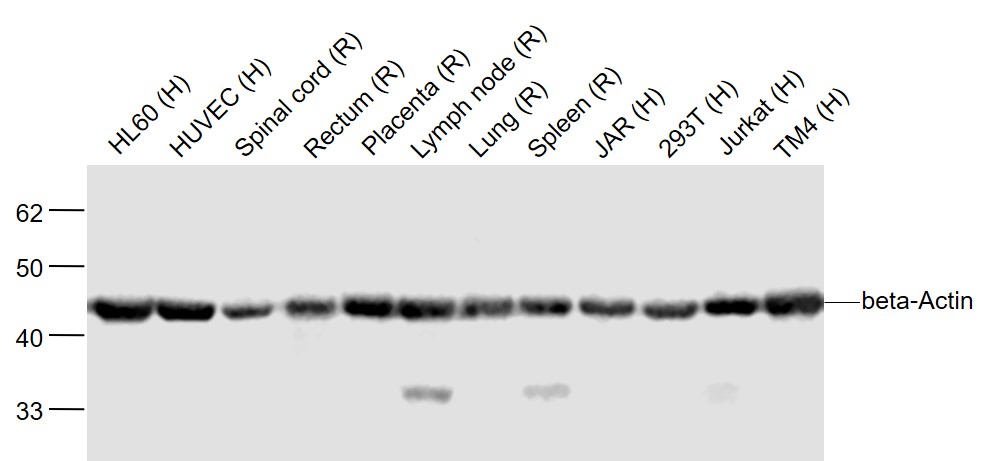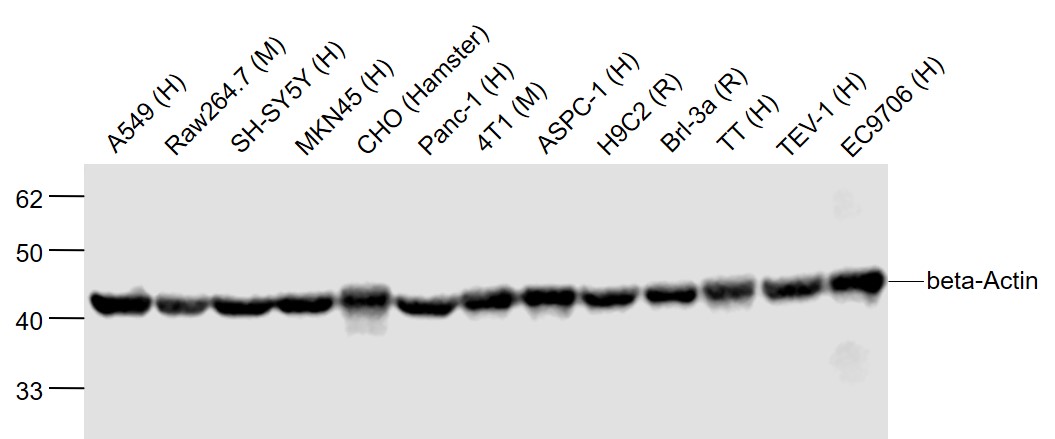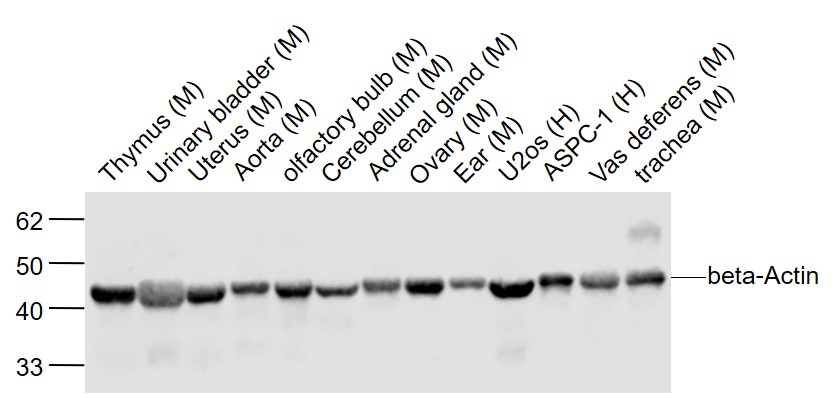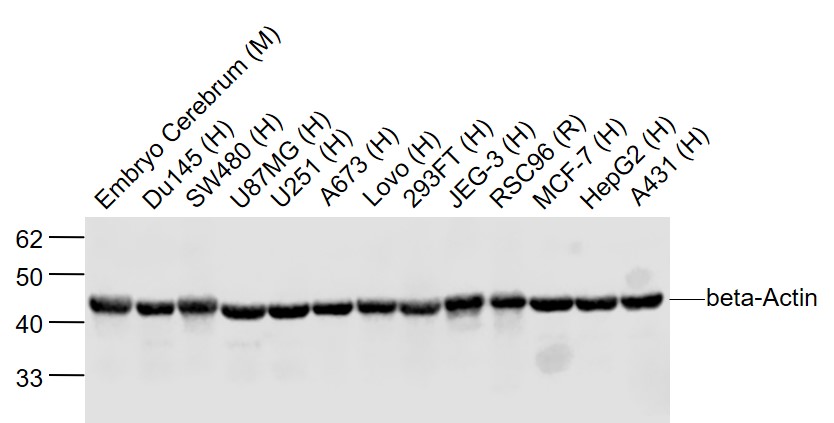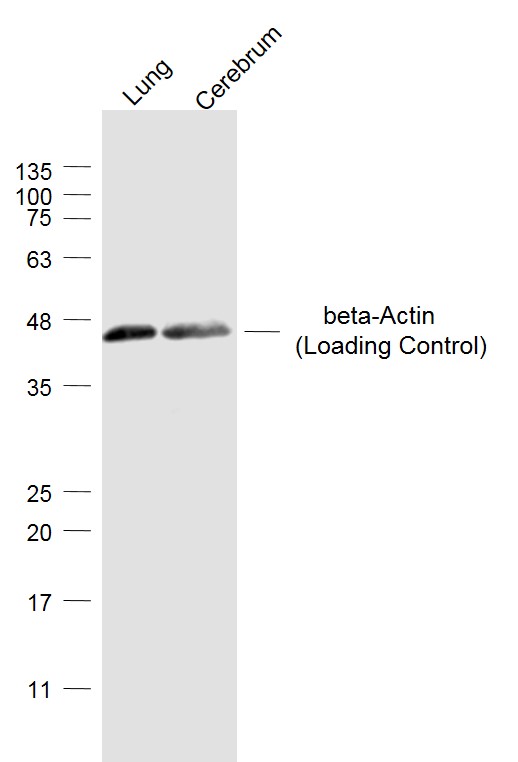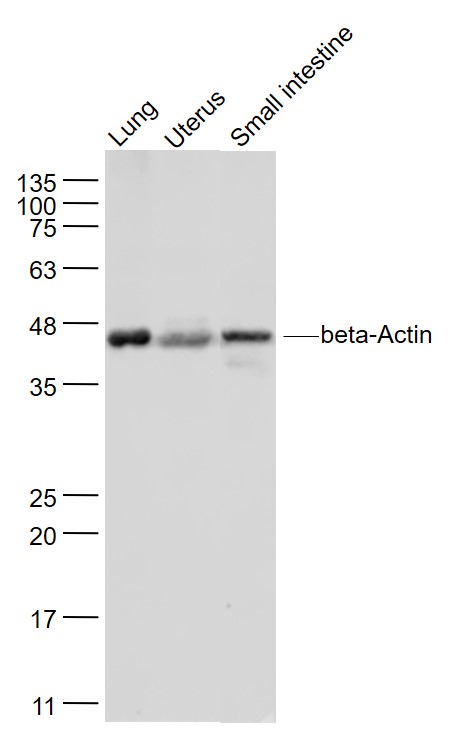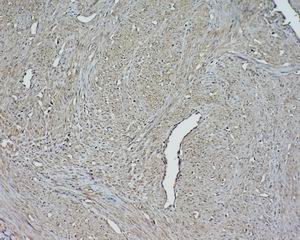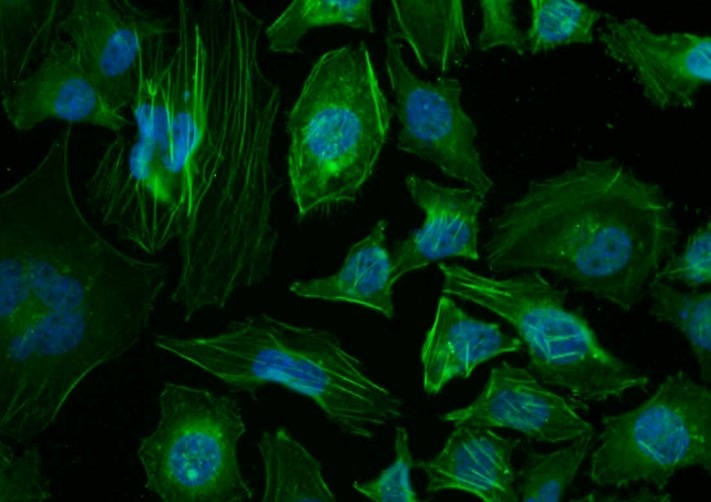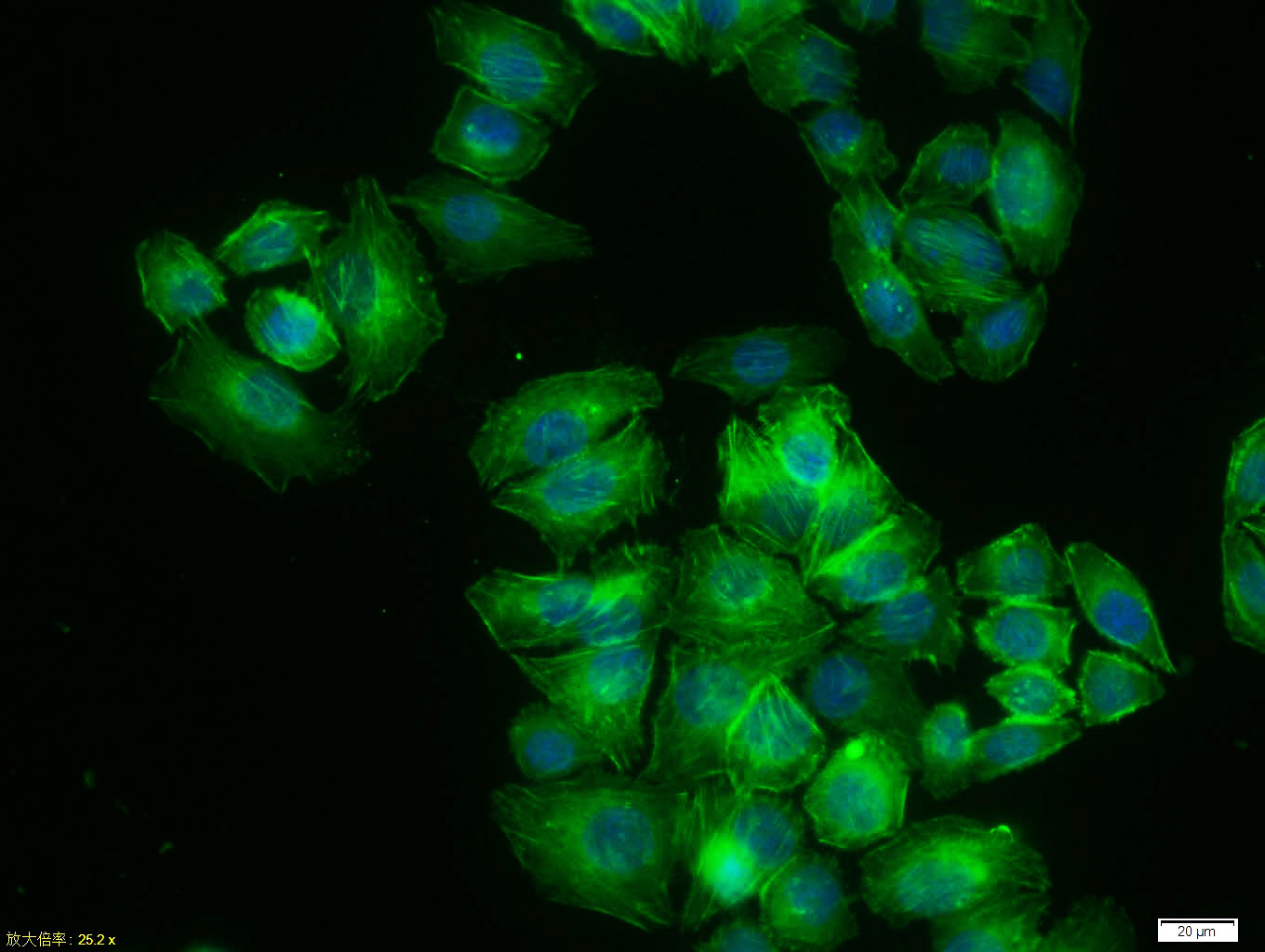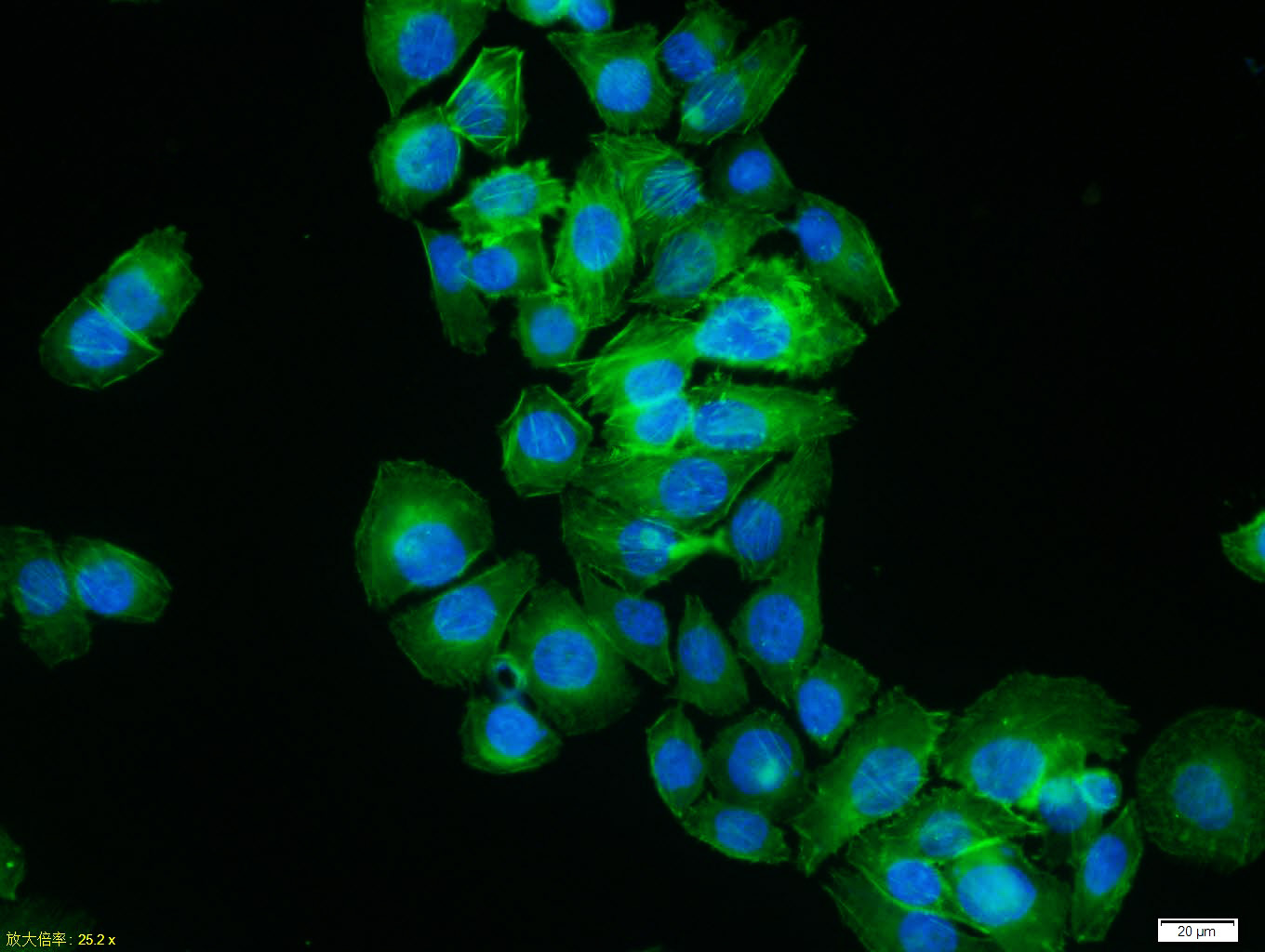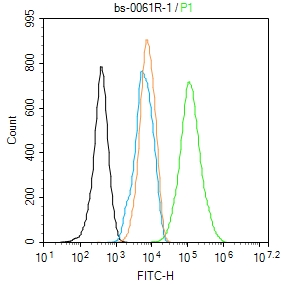
Rabbit Anti-beta-Actin (Loading Control)antibody
Beta Actin; beta-Actin; ACTB; Actin cytoplasmic 1; Actin, beta; Beta actin; beta cytoskeletal actin; A X actin like protein; ACTB; Actin cytoplasmic 1; alpha sarcomeric Actin; Actx; Beta cytoskeletal actin; Melanoma X actin; PS1TP5BP1; ACTB_HUMAN.β actin;
View History [Clear]
Details
Product Name beta-Actin (Loading Control) Chinese Name β-肌动蛋白/β-Actin(内参)抗体 Alias Beta Actin; beta-Actin; ACTB; Actin cytoplasmic 1; Actin, beta; Beta actin; beta cytoskeletal actin; A X actin like protein; ACTB; Actin cytoplasmic 1; alpha sarcomeric Actin; Actx; Beta cytoskeletal actin; Melanoma X actin; PS1TP5BP1; ACTB_HUMAN. β actin; βactin; literatures Product Type Internal reference anti Research Area Tumour Cell biology Signal transduction Cytoskeleton Immunogen Species Rabbit Clonality Polyclonal React Species Human, Mouse, Rat, Hamster, 3 (predicted: Chicken, Dog, Pig, Rabbit, Sheep, Bee, Fish, Guinea Pig, Cat, 2) Applications WB=1:5000-50000 ELISA=1:5000-20000 IHC-P=1:100-500 Flow-Cyt=1μg/Test ICC=1:100 (Paraffin sections need antigen repair)
not yet tested in other applications.
optimal dilutions/concentrations should be determined by the end user.Theoretical molecular weight 42kDa Cellular localization cytoplasmic Form Liquid Concentration 1mg/ml immunogen Synthetic MAP peptide derived from human beta-Actin: 1-200/375 Lsotype IgG Purification affinity purified by Protein A Buffer Solution 0.01M TBS(pH7.4) with 1% BSA, 0.03% Proclin300 and 50% Glycerol. Storage Shipped at 4℃. Store at -20 °C for one year. Avoid repeated freeze/thaw cycles. Attention This product as supplied is intended for research use only, not for use in human, therapeutic or diagnostic applications. PubMed PubMed Product Detail Loading Control
This gene encodes one of six different actin proteins. Actins are highly conserved proteins that are involved in cell motility, structure, and integrity. This actin is a major constituent of the contractile apparatus and one of the two nonmuscle cytoskeletal actins. [provided by RefSeq, Jul 2008].
Function:
Actins are highly conserved proteins that are involved in various types of cell motility and are ubiquitously expressed in all eukaryotic cells.
Subunit:
Polymerization of globular actin (G-actin) leads to a structural filament (F-actin) in the form of a two-stranded helix. Each actin can bind to 4 others. Identified in a mRNP granule complex, at least composed of ACTB, ACTN4, DHX9, ERG, HNRNPA1, HNRNPA2B1, HNRNPAB, HNRNPD, HNRNPL, HNRNPR, HNRNPU, HSPA1, HSPA8, IGF2BP1, ILF2, ILF3, NCBP1, NCL, PABPC1, PABPC4, PABPN1, RPLP0, RPS3, RPS3A, RPS4X, RPS8, RPS9, SYNCRIP, TROVE2, YBX1 and untranslated mRNAs. Component of the BAF complex, which includes at least actin (ACTB), ARID1A, ARID1B/BAF250, SMARCA2, SMARCA4/BRG1, ACTL6A/BAF53, ACTL6B/BAF53B, SMARCE1/BAF57 SMARCC1/BAF155, SMARCC2/BAF170, SMARCB1/SNF5/INI1, and one or more of SMARCD1/BAF60A, SMARCD2/BAF60B, or SMARCD3/BAF60C. In muscle cells, the BAF complex also contains DPF3. Found in a complex with XPO6, Ran, ACTB and PFN1. Component of the MLL5-L complex, at least composed of MLL5, STK38, PPP1CA, PPP1CB, PPP1CC, HCFC1, ACTB and OGT. Interacts with XPO6 and EMD. Interacts with ERBB2.
Subcellular Location:
Cytoplasm. cytoskeleton.
Tissue Specificity:
Ubiquitously expressed in all eukaryotic cells.
Post-translational modifications:
ISGylated.
Oxidation of Met-44 by MICALs (MICAL1, MICAL2 or MICAL3) to form methionine sulfoxide promotes actin filament depolymerization. Methionine sulfoxide is produced stereospecifically, but it is not known whether the (S)-S-oxide or the (R)-S-oxide is produced.
DISEASE:
Defects in ACTA1 are the cause of nemaline myopathy type 3 (NEM3) [MIM:161800]. A form of nemaline myopathy. Nemaline myopathies are muscular disorders characterized by muscle weakness of varying severity and onset, and abnormal thread-or rod-like structures in muscle fibers on histologic examination. The phenotype at histological level is variable. Some patients present areas devoid of oxidative activity containg (cores) within myofibers. Core lesions are unstructured and poorly circumscribed.
Defects in ACTA1 are a cause of myopathy congenital with excess of thin myofilaments (MPCETM) [MIM:161800]. A congenital muscular disorder characterized at histological level by areas of sarcoplasm devoid of normal myofibrils and mitochondria, and replaced with dense masses of thin filaments. Central cores, rods, ragged red fibers, and necrosis are absent.
Similarity:
Belongs to the actin family.
SWISS:
P60709
Gene ID:
60
Database links:Entrez Gene: 396526 Chicken
Entrez Gene: 60 Human
Entrez Gene: 11461 Mouse
Entrez Gene: 100009272 Rabbit
Omim: 102630 Human
SwissProt: P60706 Chicken
SwissProt: P60708 Horse
SwissProt: P60709 Human
SwissProt: P60710 Mouse
SwissProt: P29751 Rabbit
SwissProt: P60713 Sheep
Unigene: 520640 Human
Unigene: 708120 Human
Unigene: 727576 Human
Unigene: 328431 Mouse
Unigene: 391967 Mouse
Unigene: 94978 Rat
Internal reference anti
β-Actin是横纹肌肌纤维中的一种主要蛋白质成分,也是肌肉细丝及Cytoskeleton微丝的主要成分。具有收缩功能,分布广泛,具有高度保守性,在细胞中的表达相对稳定,因此常被用作校正系统的内参。β-Actin分子量为42 kDa,
此抗体主要用于标记平滑肌及其来源的Tumour。
我公司开发的β-Actin抗体已被国内外广大科研工作者使用,被称为质量信得过产品.Product Picture
A549 Cell (Human) Lysate at 30 ug
Primary: Lane1: Anti-beta-Actin (SL0061R) at 1/500 dilution
Lane2: Anti-beta-Actin (SL0061R) at 1/1000 dilution
Lane3: Anti-beta-Actin (SL0061R) at 1/2000 dilution
Lane4: Anti-beta-Actin (SL0061R) at 1/4000 dilution
Lane5: Anti-beta-Actin (SL0061R) at 1/5000 dilution
Lane6: Anti-beta-Actin (SL0061R) at 1/8000 dilution
Lane7: Anti-beta-Actin (SL0061R) at 1/10000 dilution
Secondary: IRDye800CW Goat Anti-Rabbit IgG at 1/20000 dilution
Predicted band size: 42 kD
Observed band size: 42 kD
Sample:
Lane1: 293T Cell Lysate at 25 ug
Lane2: A549 Cell Lysate at 25 ug
Lane3: A431 Cell Lysate at 25 ug
Primary: Anti- beta-Actin (SL0061R) at 1/1000 and 1/5000 dilution
Secondary: IRDye800CW Goat Anti-Rabbit IgG at 1/20000 dilution
Predicted band size: 42kD
Observed band size: 42 kD
Sample: Lung lysate at 30ug;
Primary: Anti-beta-actin (SL0061R) at 1:1000 dilution
Secondary: HRP conjugated Goat-Anti-Rabbit IgG(bse-0295G) at 1:3000 dilution
Predicted band size : 42kD
Observed band size : 42kD
Sample:
SH-SY5Y (Human) Lysate at 40 ug
Primary:
Anti-beta-Actin (SL0061R) at 1/2000~1/20000 dilution
Secondary: IRDye800CW Goat Anti-Rabbit IgG at 1/20000 dilution
Predicted band size: 42 kD
Observed band size: 42 kD
Sample:
Thymus (Mouse) Lysate at 40 ug
Primary:
Anti-beta-Actin (SL0061R) at 1/1000~1/20000 dilution
Secondary: IRDye800CW Goat Anti-Rabbit IgG at 1/20000 dilution
Predicted band size: 42 kD
Observed band size: 42 kD
Sample:
HL60 (Human) Cell Lysate at 40 ug
HUVEC (Human) Cell Lysate at 40 ug
Spinal cord (Rat) Lysate at 40 ug
Rectum (Rat) Lysate at 40 ug
Placenta (Rat) Lysate at 40 ug
Lymph node (Rat) Lysate at 40 ug
Lung (Rat) Lysate at 40 ug
Spleen (Rat) Lysate at 40 ug
JAR (Human) Cell Lysate at 40 ug
293T (Human) Cell Lysate at 40 ug
Jurkat (Human) Cell Lysate at 40 ug
TM4 (Human) Cell Lysate at 40 ug
Primary: Anti-beta-Actin (SL0061R) at 1/2000 dilution
Secondary: IRDye800CW Goat Anti-Rabbit IgG at 1/20000 dilution
Predicted band size: 42 kD
Observed band size: 42 kD
Sample:
A549 (Human) Cell Lysate at 40 ug
Raw264.7 (Mouse) Cell Lysate at 40 ug
SH-SY5Y (Human) Cell Lysate at 40 ug
MKN45 (Human) Cell Lysate at 40 ug
CHO (Hamster) Cell Lysate at 40 ug
Panc-1 (Human) Cell Lysate at 40 ug
4T1 (Mouse) Cell Lysate at 40 ug
ASPC-1 (Human) Cell Lysate at 40 ug
H9C2 (Rat) Cell Lysate at 40 ug
Brl-3a (Rat) Cell Lysate at 40 ug
TT (Human) Cell Lysate at 40 ug
TEV-1 (Human) Cell Lysate at 40 ug
EC9706 (Human) Cell Lysate at 40 ug
Primary: Anti-beta-Actin (SL0061R) at 1/2000 dilution
Secondary: IRDye800CW Goat Anti-Rabbit IgG at 1/20000 dilution
Predicted band size: 42 kD
Observed band size: 42 kD
Sample:
Thymus (Mouse) Lysate at 40 ug
Urinary bladder (Mouse) Lysate at 40 ug
Uterus (Mouse) Cell Lysate at 40 ug
Aorta (Mouse) Lysate at 40 ug
olfactory bulb (Mouse) Lysate at 40 ug
Cerebellum (Mouse) Lysate at 40 ug
Adrenal gland (Mouse) Lysate at 40 ug
Ovary (Mouse) Lysate at 40 ug
Ear (Mouse) Lysate at 40 ug
U2os (Human) Cell Lysate at 40 ug
ASPC-1 (Human) Cell Lysate at 40 ug
Vas deferens (Mouse) Lysate at 40 ug
trachea (Mouse) Lysate at 40 ug
Primary: Anti-beta-Actin (SL0061R) at 1/2000 dilution
Secondary: IRDye800CW Goat Anti-Rabbit IgG at 1/20000 dilution
Predicted band size: 42 kD
Observed band size: 42 kD
Sample:
Embryo Cerebrum (Mouse) Lysate at 40 ug
Du145 (Human) Lysate at 40 ug
SW480 (Human) Cell Lysate at 40 ug
U87MG (Human) Lysate at 40 ug
U251 (Human) Lysate at 40 ug
A673 (Human) Lysate at 40 ug
Lovo (Human) Lysate at 40 ug
293FT (Human) Lysate at 40 ug
JEG-3 (Human) Lysate at 40 ug
RSC96 (Rat) Cell Lysate at 40 ug
MCF-7 (Human) Cell Lysate at 40 ug
HepG2 (Human) Lysate at 40 ug
A431 (Human) Lysate at 40 ug
Primary: Anti-beta-Actin (SL0061R) at 1/2000 dilution
Secondary: IRDye800CW Goat Anti-Rabbit IgG at 1/20000 dilution
Predicted band size: 42 kD
Observed band size: 42 kD
Sample:
Lung (Mouse) Lysate at 40 ug
Cerebrum (Mouse) Lysate at 40 ug
Primary: Anti-beta-Actin (Loading Control) (SL0061R) at 1/2000 dilution
Secondary: IRDye800CW Goat Anti-Rabbit IgG at 1/20000 dilution
Predicted band size: 42 kD
Observed band size: 42 kD
Sample:
Lung (Mouse) Lysate at 40 ug
Uterus (Mouse) Lysate at 40 ug
Small intestine (Mouse) Lysate at 40 ug
Primary: Anti- beta-Actin (SL0061R) at 1/2000 dilution
Secondary: IRDye800CW Goat Anti-Rabbit IgG at 1/20000 dilution
Predicted band size: 42 kD
Observed band size: 42 kD
Tissue/cell: human cervical carcinoma; 4% Paraformaldehyde-fixed and paraffin-embedded;
Antigen retrieval: citrate buffer ( 0.01M, pH 6.0 ), Boiling bathing for 15min; Block endogenous peroxidase by 3% Hydrogen peroxide for 30min; Blocking buffer (normal goat serum,C-0005) at 37℃ for 20 min;
Incubation: Anti-Beta-actin Polyclonal Antibody, Unconjugated(SL0061R) 1:1500, overnight at 4°C, followed by conjugation to the secondary antibody(SP-0023) and DAB(C-0010) staining
Tissue/cell: Hela cell; 4% Paraformaldehyde-fixed; Triton X-100 at room temperature for 20 min; Blocking buffer (normal goat serum, C-0005) at 37°C for 20 min; Antibody incubation with (beta-Actin) polyclonal Antibody, Unconjugated (SL0061R) 1:100, 90 minutes at 37°C; followed by a conjugated Goat Anti-Rabbit IgG-FITC antibody at 37°C for 90 minutes, DAPI (blue, C02-04002) was used to stain the cell nuclei.MCF7 cell; 4% Paraformaldehyde-fixed; Triton X-100 at room temperature for 20 min; Blocking buffer (normal goat serum, C-0005) at 37°C for 20 min; Antibody incubation with (beta-Actin) polyclonal Antibody, Unconjugated (SL0061R) 1:100, 90 minutes at 37°C; followed by a conjugated Goat Anti-Rabbit IgG antibody at 37°C for 90 minutes, DAPI (blue, C02-04002) was used to stain the cell nuclei.MCF7 cell; 4% Paraformaldehyde-fixed; Triton X-100 at room temperature for 20 min; Blocking buffer (normal goat serum, C-0005) at 37°C for 20 min; Antibody incubation with (beta-Actin) polyclonal Antibody, Unconjugated (SL0061R) 1:100, 90 minutes at 37°C; followed by a conjugated Goat Anti-Rabbit IgG antibody at 37°C for 90 minutes, DAPI (blue, C02-04002) was used to stain the cell nuclei.Blank control: NIH/3T3.
Primary Antibody (green line): Rabbit Anti-beta-Actin (Loading Control) antibody (SL0061R)
Dilution: 1μg /10^6 cells;
Isotype Control Antibody (orange line): Rabbit IgG .
Secondary Antibody : Goat anti-rabbit IgG-AF4Bought notes(bought amounts latest0)
No one bought this productUser Comment(Total0User Comment Num)
- No comment
+86 571 56623320
[email protected]
+86 18668110335
Scan Wechat Qrcode
